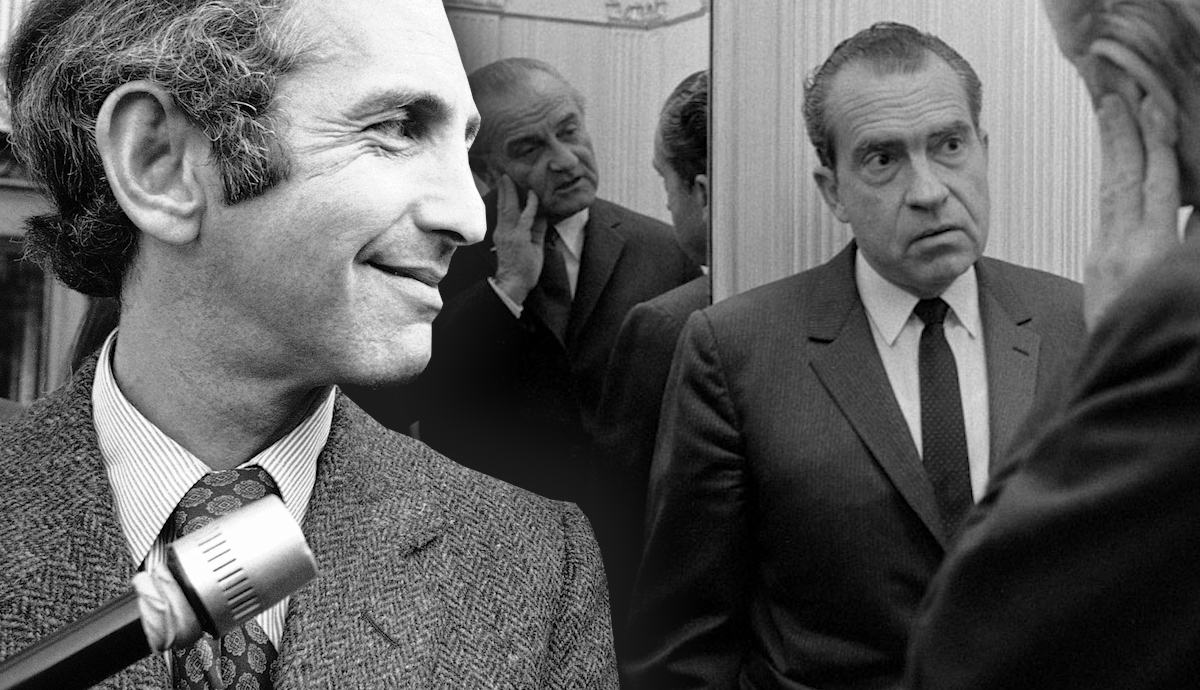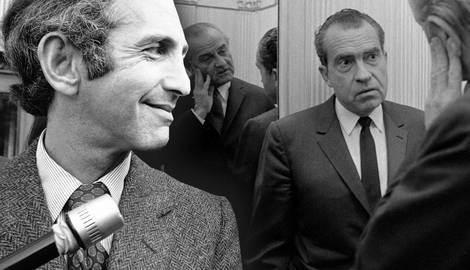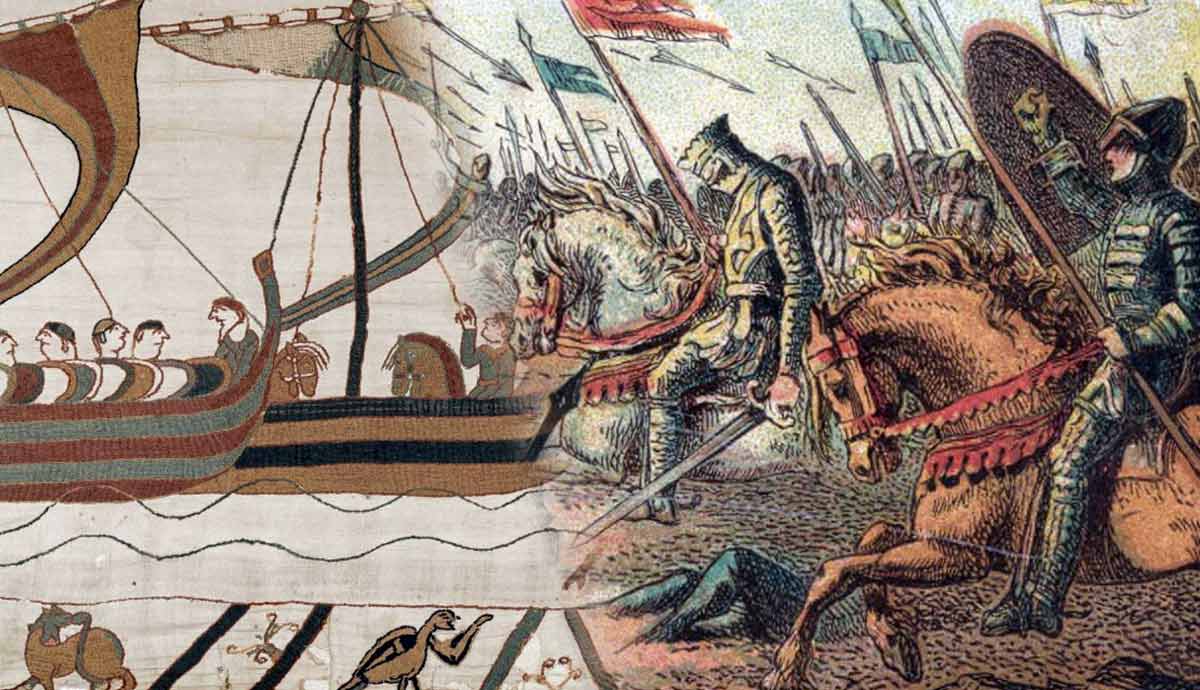
After the Tet Offensive in early 1968, many Americans became opposed to continued US involvement in the Vietnam War. Prior to Tet, the public had routinely heard that the war was almost over and that the communists were on the verge of collapse. In 1971, The New York Times began publishing secret government documents photographed by an employee at the RAND Corporation, which revealed the government had lied about the scope of America’s wartime involvement in Vietnam. The administration of President Richard Nixon tried to quash the reporting on the grounds of national security. Swiftly, the case went all the way to the US Supreme Court, and the aftermath would be felt for decades.
Setting the Stage: Limits on Wartime Press

Traditionally, war has diminished the power of the free press in the name of national security and maintaining morale. This was a formal government endeavor up through World War II, with government agencies tasked with ensuring that newspapers, radio broadcasts, and video newsreels did not publish any sensitive information or news that could allegedly damage the home front. A major push for government oversight of the media during wartime came after the Spanish-American War when the press leaked some US war plans. Censorship was bolstered by two World War I-era laws: the Espionage Act of 1917 and the Sedition Act of 1918.
Up through the Korean War, the American media were largely aligned with the US government – coverage was highly supportive of war efforts and the administrations conducting them. During the Vietnam War, however, the press became skeptical of the continued military involvement. Part of this change had to do with new technology and the ability to get news independently of government sources. By the middle of the war, the media was able to get information on combat almost in real-time, swiftly eroding any notion that war was a heroic, noble endeavor. Thus, the pro-patriotic news reporting seen from World War I through Korea became a thing of the past.
Setting the Stage: Gulf of Tonkin Resolution

The Vietnam War became highly contentious due to the voluntary nature of its escalation. While the World Wars and Korean War had been clear responses to acts of foreign aggression against either America itself or a direct ally, the situation in Vietnam was less clear. Similarly, there was no clear end objective in Vietnam. In World War I, Germany was made to seek an armistice. In World War II, Germany and Japan surrendered unconditionally. In Korea, South Korea was saved from a communist military invasion. What was the US government’s goal in Vietnam?
Under the Gulf of Tonkin Resolution, the president and his administration were given virtually unchecked power to expand US operations in the war as they saw fit. After North Vietnamese gunboats allegedly attacked an American destroyer in the Gulf of Tonkin, Congress gave President Lyndon Johnson the power to “take any measures necessary” to retaliate and promote peace and security in Southeast Asia. This led to a continual escalation of American involvement in the war between 1965 and 1968, with over a half million US soldiers eventually stationed in South Vietnam. The American public quickly became critical of this build-up and questioned whether it was necessary.
1967: Secretary of Defense Commissions a Report

In June 1967, US Secretary of Defense Robert McNamara, who had held the job since 1961 and the earliest days of escalation in Vietnam, commissioned a report that was later entitled History of U.S. Decision-Making in Vietnam, 1945-68. The report was commissioned due to McNamara’s growing frustration with the war. Despite overwhelming US technological advantages, it was not able to defeat the North Vietnamese Army and communist guerrillas in South Vietnam. The report, finished in 1969, covered the situation in Vietnam from the end of World War II until the aftermath of the surprise Tet Offensive on January 30, 1968.
The report was top-secret and contained classified information going back to the administration of President Harry S. Truman. Once completed, the report had over 3,000 pages of text and 4,000 pages of supporting documents; it covered almost 50 volumes! It had been completed by academics and federal civilian employees rather than solely by US military personnel, which perhaps led to its later leakage. McNamara, after commissioning the report, was not involved in regular oversight. This may also have contributed to its later leakage.
1971: A Leaker Sends the Report to the New York Times

One employee of the RAND Corporation who was involved in compiling McNamara’s report was Daniel Ellsberg, a former Marine and Harvard scholar who had worked as a civilian State Department employee in Vietnam from 1964 to 1965. By the time Ellsberg had returned to the US from South Vietnam, he was opposed to the ongoing Vietnam War. Upon leaving the RAND Corporation in 1969, he photocopied large parts of the report with help from a friend. Ellsberg believed that the American public deserved to know the truth about America’s involvement in the Vietnam War.
Ellsberg took the Xeroxed pages of the report to members of Congress, helping to draft a resolution urging the end of US involvement in the war. He also met with Henry Kissinger, at the time National Security Advisor, and US Senator George McGovern, who would later become the 1972 Democratic nominee for president. McGovern pledged to read the papers during a Senate filibuster, thus entering them into the official records. Later, McGovern changed his mind. After McGovern was unwilling to release the papers to the public himself, Ellsberg sent them to the New York Times in March 1971.
The Nixon Administration Reacts

On Sunday, June 13, 1971, the New York Times published excerpts from the Pentagon Papers on the front page. The next day, US Attorney General John Mitchell asked the newspaper to refrain from publishing any more of the report. After the newspaper refused, the administration of President Richard Nixon sued to prevent publication, resulting in a federal court placing an injunction on the newspaper until the case could be heard. To keep the presses rolling, Ellsberg also sent a copy of the Pentagon Papers to The Washington Post. After the Post began publishing on June 18, it was also sued by the Nixon administration. Ellsberg also sent the Pentagon Papers to many other newspapers, which published them.
Because the damaging information in the Pentagon Papers dealt mostly with the escalation of the war under previous Democratic president Lyndon Johnson, Republican president Nixon was more concerned with combating leaks of classified material than any specific information in the report. Unable to stop all the presses, the Nixon administration moved swiftly in the courts, with both newspapers also seeking a quick resolution. On June 28, as the lawsuit wound its way up the federal court system, Ellsberg surrendered himself into federal custody. He would be facing trial for allegedly violating the Espionage Act of 1917, with a potential sentence of up to 115 years in prison.
The New York Times vs. United States (1971)

Although somewhat gleeful that the Democratic administrations of John F. Kennedy and Lyndon B. Johnson were being savaged by the Pentagon Papers, Nixon’s team needed a legal rationale to sue to stop the publication of the leaks. If the courts ruled in favor of the newspapers, unflattering leaks about the Nixon administration could also be printed with impunity. The Nixon administration argued in court that publishing the Pentagon Papers threatened national security. At issue was the concept of “prior restraint”: the belief that the government should be allowed to censor the news prior to publication.

In a 6-3 decision, the US Supreme Court ruled in favor of the New York Times. Based on the precedent in Near v. Minnesota (1931), the newspaper had no obligation to not publish the information in the Pentagon Papers even if it was considered sensitive. However, newspapers could still be sued after publication for revealing classified information, and the Court did not strike down the concept of prior restraint entirely. Simply, the past information in the Pentagon Papers was not sensitive enough to give the Nixon administration a compelling interest in censoring its publication.
Nixon Creates the White House “Plumbers”

Fearful of leaks within his own administration, Nixon created a small team to combat them known as the “White House Plumbers” (so named because plumbers fix leaks) on July 24, 1971 after warnings of damaging leaks by Secretary of State Henry Kissinger. There ended up being six members of the Nixon administration on the Plumbers team, plus outside contractors who would be hired. The top two Plumbers were G. Gordon Liddy, an Army veteran and former FBI agent, and E. Howard Hunt, a former CIA agent who had helped plan a 1954 pro-American coup in Guatemala and the infamous 1961 Bay of Pigs invasion in Cuba.
Hoping to discredit Pentagon Papers leaker Daniel Ellsberg, the Plumbers broke into the office of Ellsberg’s psychiatrist in an attempt to find embarrassing information. This backfired, as the discovery of the government’s involvement in the break-in led to a mistrial of Ellsberg. All charges against Ellsberg were dismissed, which did not serve as a deterrent to future leakers! Ellsberg went public on Meet The Press after this incident, resulting in divided public opinion over his actions. Many Americans viewed him as a hero for leaking the truth about the government’s conduct in escalating the Vietnam War, while others viewed him as a traitor.
Aftermath: Loss of Trust in Federal Government

Because the Pentagon Papers revealed that the government had been lying about the state of the Vietnam War, the public was outraged. A major revelation was the Kennedy administration’s involvement in the 1963 assassination of South Vietnam’s president, who was replaced with a more pro-war figure. There was also the publication of more evidence that the government had always known that war was not “almost over,” as it had long claimed. However, since the Pentagon Papers had been published long after the Tet Offensive, many Americans had already come to this realization.
Public acceptance of the Pentagon Papers caused a significant shift in how leaks of government material were viewed. Prior to 1971, leaks of government information were often seen as traitorous, anti-American plots, perhaps even encouraged by the Soviet Union. The realization that the government lied about the events in Vietnam made whistleblowing a more noble activity. After the Pentagon Papers, more people believed that the government could, and was, hiding information on military and foreign affairs.
Aftermath: Watergate

The creation of the White House Plumbers led directly to the infamous Watergate scandal. Between the break-in of Ellsberg’s psychiatrist’s office and Watergate, the Plumbers undertook a few investigations to seek damaging information on Democrats. One involved looking deeper into allegations that the Kennedy administration was complicit in the assassination of Ngo Dinh Diem, South Vietnam’s president, in 1963. Another saw the Plumbers try to dig up dirt on Democratic senator Edward “Ted” Kennedy over the 1969 Chappaquiddick Incident.
In the summer of 1972, the Plumbers conducted their largest and final operation: bugging of the Democratic National Committee headquarters in the Watergate office complex in Washington DC. However, an alert security guard noticed the tampered door locks and contacted the police, who arrived and arrested the plumbers. Quickly, the Plumbers were connected with the Nixon White House. The Watergate scandal ballooned and eventually resulted in the resignation of President Nixon in August 1974 after published audio tapes revealed that he had ordered the cover-up of the Watergate break-in.
Modern Example: WikiLeaks

Wartime whistleblowing remains controversial. A modern example of wartime whistleblowing occurred during the ongoing War in Afghanistan (2001-2021). In 2010, a US service member sent classified documents to the website WikiLeaks revealing alleged war crimes committed by US personnel, improper distribution of equipment to US soldiers, and inaccurate reporting about the strength of the Taliban (America’s radical Islamic regime opponents). Both reports were shocking to the public at the time, though analysts quickly concluded that the Pentagon Papers had a far greater impact.
Bradley Manning (now Chelsea Manning), who sent the classified documents to WikiLeaks, was later sentenced to prison. As Ellsberg in 1971, debate raged over whether Manning was a whistleblower or a traitor. Prosecutors argued that Manning’s information detailed US operations and could be used by the enemy to target US troops and equipment more accurately. In the case of the Pentagon Papers, the US war in Vietnam was drawn down under Nixon and did not include US military technical data. Manning, in 2017, told reporters that she leaked the documents to start the debate over US actions in Afghanistan and did not think she was jeopardizing national security.










